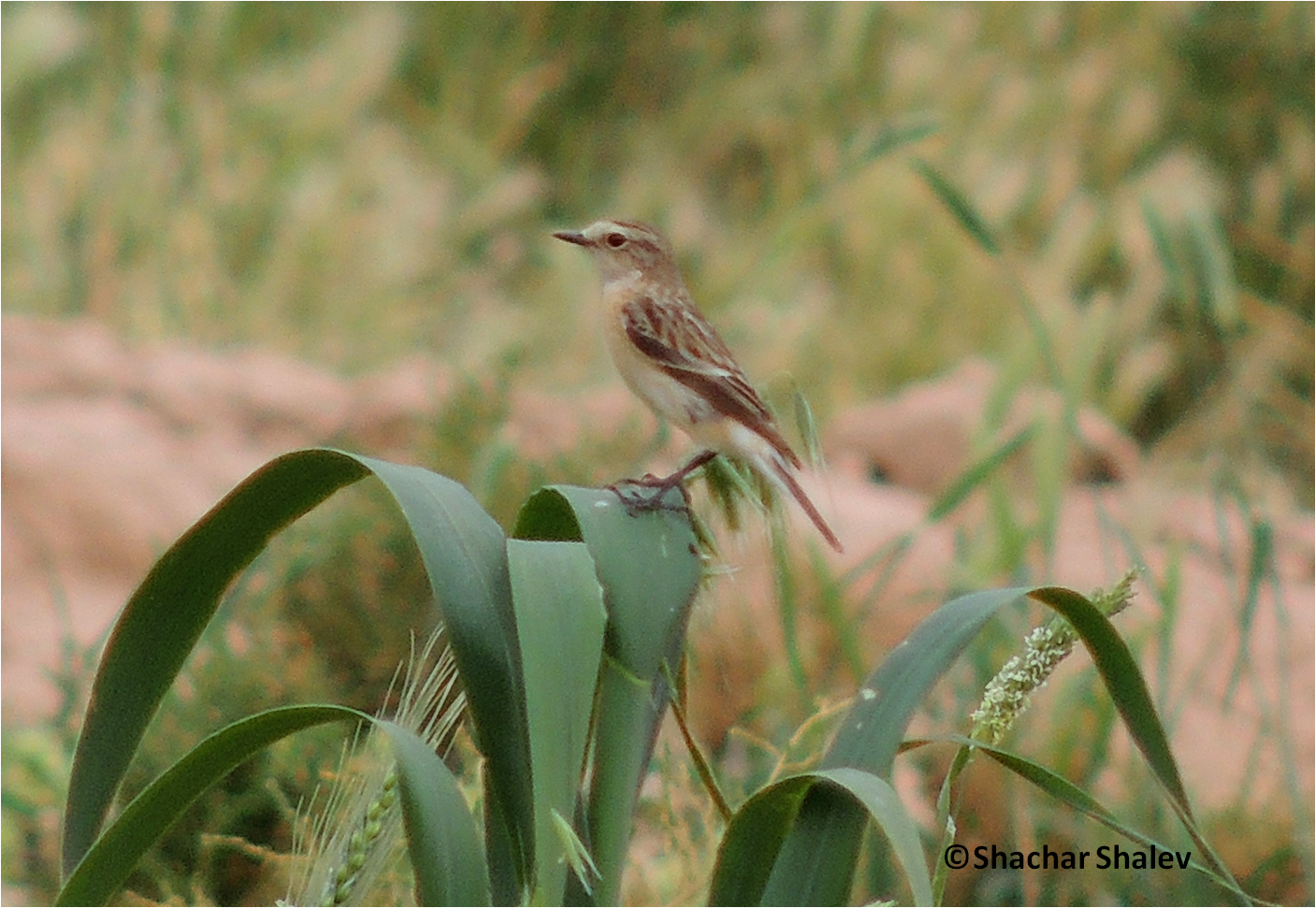The past few days have been slow days for the ringing station, with few birds caught in the nets. Gusty and windy conditions were a factor, but also, as said already, the desert is in full bloom after the rains, and the birds do not need to come to the kibbutzim to look for food.
Overhead migration is going on in full force, with well over 15,000 raptors above Lotan today. The vast majority were Steppe Buzzards (Buteo buteo vulpines), but also large numbers of Black Kites (Milvus migrans), Steppe Eagles (Aquila nipalensis), Booted Eagles (Hieraaetus pennatus), Egyptian Vultures (Neophron percnopterus), Black Storks (Ciconia nigra) and White Storks (Ciconia ciconia). Frank Moffatt, who is staying here at Lotan, had one Cinereous (Black) Vulture (Aegypius monachus), too. I keep track of the migration counts on the excellent Dutch website www.trektellen.nl.
 |
| Black Storks in the Eilat mountains |
With little over 20 birds in the nets, we did have a nice surprise that the Common Kestrel (Falco tinnunculus) that has been hanging around the ringing station has finally been caught in the net. It was already ringed, and we are in the process of finding out where and when it had been ringed.
 |
| Feisty Kestrel just before release |
The lack of birds was evident everywhere, so I took a picture of a resident near Lotan, the Stone Curlew (Burhinus oedicnemus), here two of the three that I saw right outside the back gate of the kibbutz.
 |
| Stone Curlews |




















